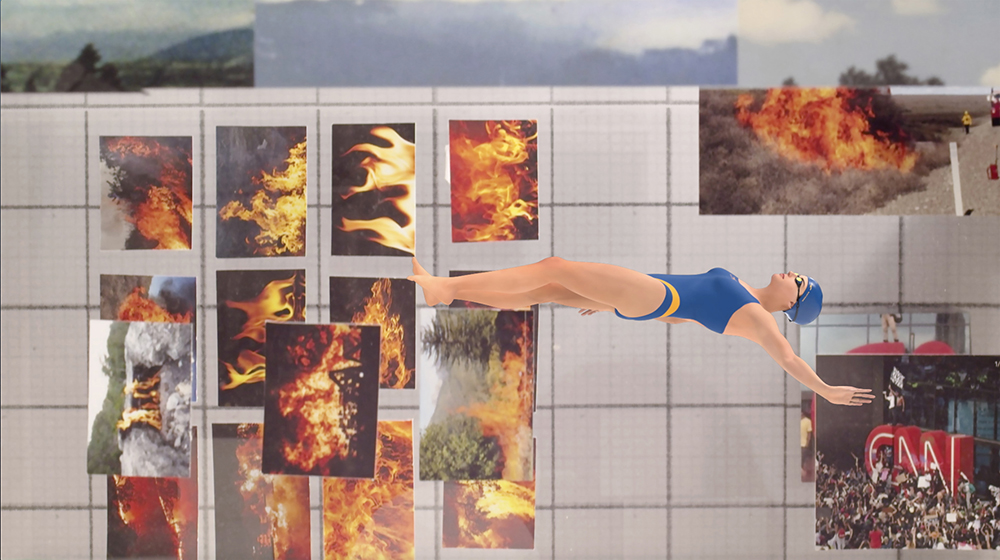These concepts are perhaps most evident in the works of photographer Max Pinckers. Pinckers’ images, taken from his series Unhistories, are not the most immediately striking element of the sizable and, in some ways, maze-like exhibition. Their impact however, along with the debates they ignite, is considerable.
“Pinckers comes from a documentary photography background,” explains co-curator, Stephanie Bunk, gesturing to the images mounted on the white walls around her. “But, he’s really very critical about this medium. His work is concerned with fact and fiction. He believes documentary photography is a fiction and that the pictures we see in the media are fiction too.”
Pinckers’ series began in 2014, when the Belgian-born photographer discovered British propaganda in London’s Archive of Modern Conflict – incomplete histories of Kenya’s Mau Mau Rebellion, told through the colonial lens. Working with veterans of the war, Pinckers has since set about creating “imagined records”, by recreating moments of struggle previously erased from history. His portraits of Mau Mau veterans wielding weapons and studying archive images are simultaneously emotive and uncomfortable.
“It’s interesting, because he worked closely with universities, with museums and with the Mau Mau veterans,” says Bunk. “But of course, Pinckers has a white gaze on this subject. So, as he deals with questions, he also raises them.
“This work is not the answer, but it is his attempt to fill in history’s blind spots. Using the possibilities open to him as a white, European photographer, he has offered his work, his collaborative style. How far this goes in remedying these issues in the end? That remains to be seen.”
It’s a fittingly open interpretation for an exhibition that poses so many more questions than it answers. Volker Renner’s Faces of the Riot – 400, highly pixelated images of alleged US Capitol rioters, taken from social media platforms and used by the FBI to identify law breakers – asks that we consider questions of legality and power in algorithms. Taryn Simon’s The Picture Collection – collages created using the New York Public Library’s 1.29 million images, postcards, press and advertising photos – prompts us to ponder how visual information is catalogued and archived.
But, with so much to consider, what should visitors take away from Give and Take. Images upon Images? “The most important thing”, Roettig says, “is that visitors leave thinking a little more deeply about the role of the image today.”
Give and Take. Images upon Images is on show at Hamburger Kunsthalle, as part of Photo Triennial Hamburg, until 28 August 2022. Tickets are available here.

